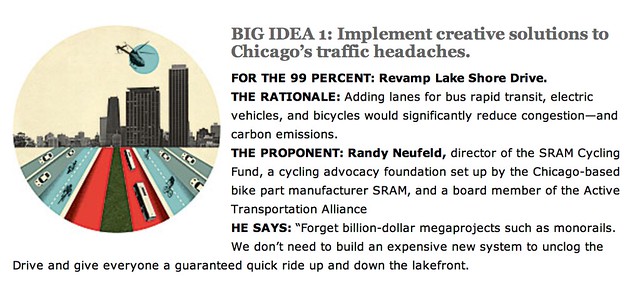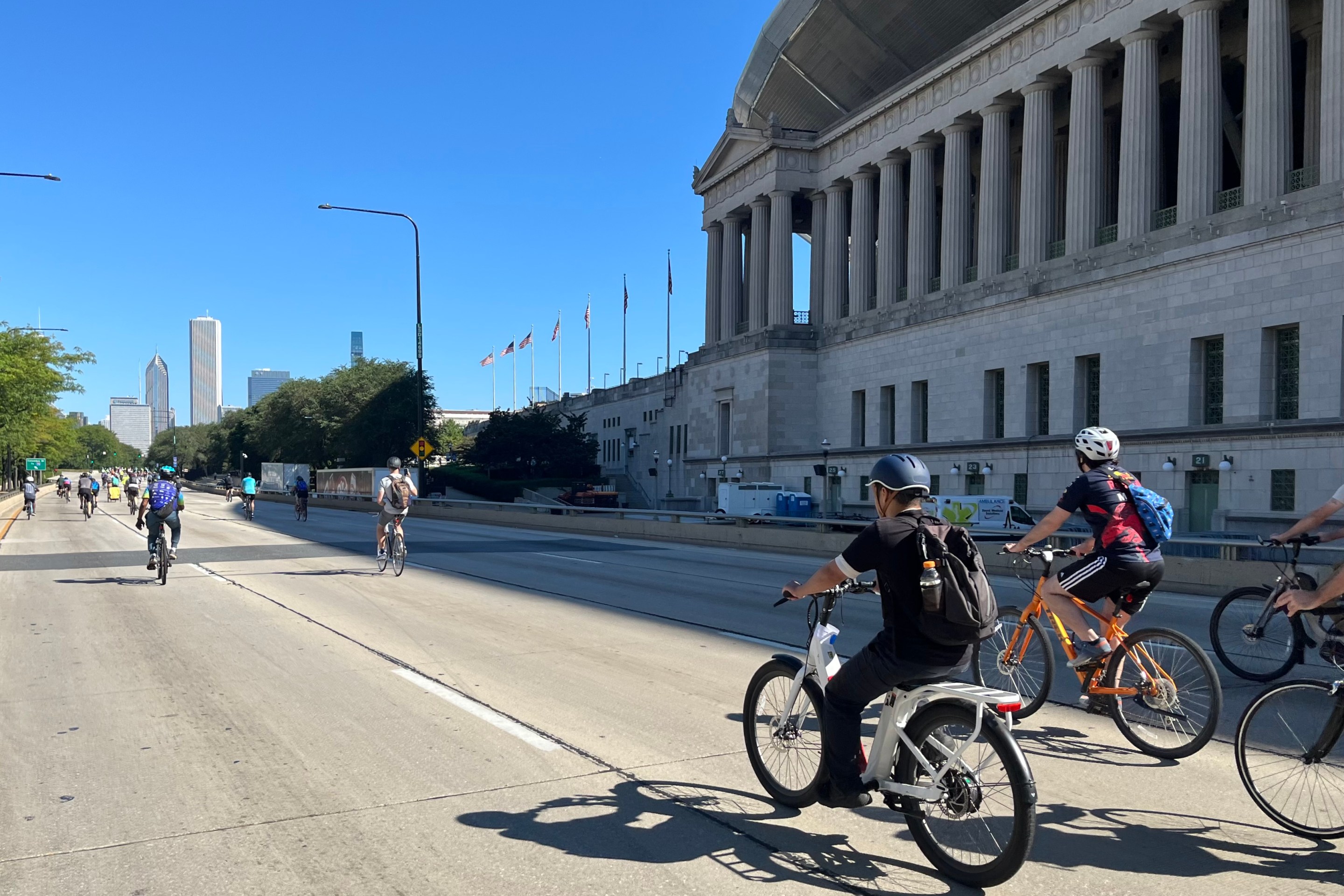Back in August, longtime bicycling activist Randy Neufeld – currently the director of the SRAM Cycling Fund and formerly the Active Transportation Alliance's first paid staffer – outlined an intriguing proposal in Chicago Magazine: building a bike-and-bus highway into the north Lake Shore Drive reconstruction project.
...the city could create two specialized lanes at minimal cost. One should be for a bus rapid transit system, which is essentially a train system without rails. Rapid transit buses—already operating in places like Bogotá, Colombia—move rapidly. They don’t bog down in traffic like express buses do. And riders pay at stations instead of as they board, which is more efficient. The bus lane would be closest to the median strip. Then there would be a lane for bikes and for light electric vehicles, such as electric assist cargo bikes and solar-charged scooters. Two traditional car lanes would be on the right, where drivers could use the off ramps easily.
Just imagine: Chicago could be the first city in the world with an express lane—on our signature road!—dedicated to emerging green urban mobility. There are big economic benefits to a Lake Shore Drive that attracts tourists, that serves residents who choose not to drive, and that is 100 percent reliable, regardless of events and weather. And all this could be done within five years.
I ran into Neufeld on Monday at the Active Transportation Alliance's Transit Summit and asked him how the high-capacity buses would enter and exit the highway. If the buses had to merge with regular automobile traffic, it would slow the buses down or make it difficult for drivers to enter or exit Lake Shore Drive.
He said the buses wouldn't leave the route: They would work like a rail system, with stations at the major streets. Express routes like 151-Sheridan would exit at major streets and take surface roads. There could be some direct access ramps for buses only, like on I-15 in Escondido, California (satellite view):
The same ramps would give cyclists access to a speedy way to travel to and from downtown, avoiding the congested Lakefront Trail that gets even more difficult to ride in the winter.








